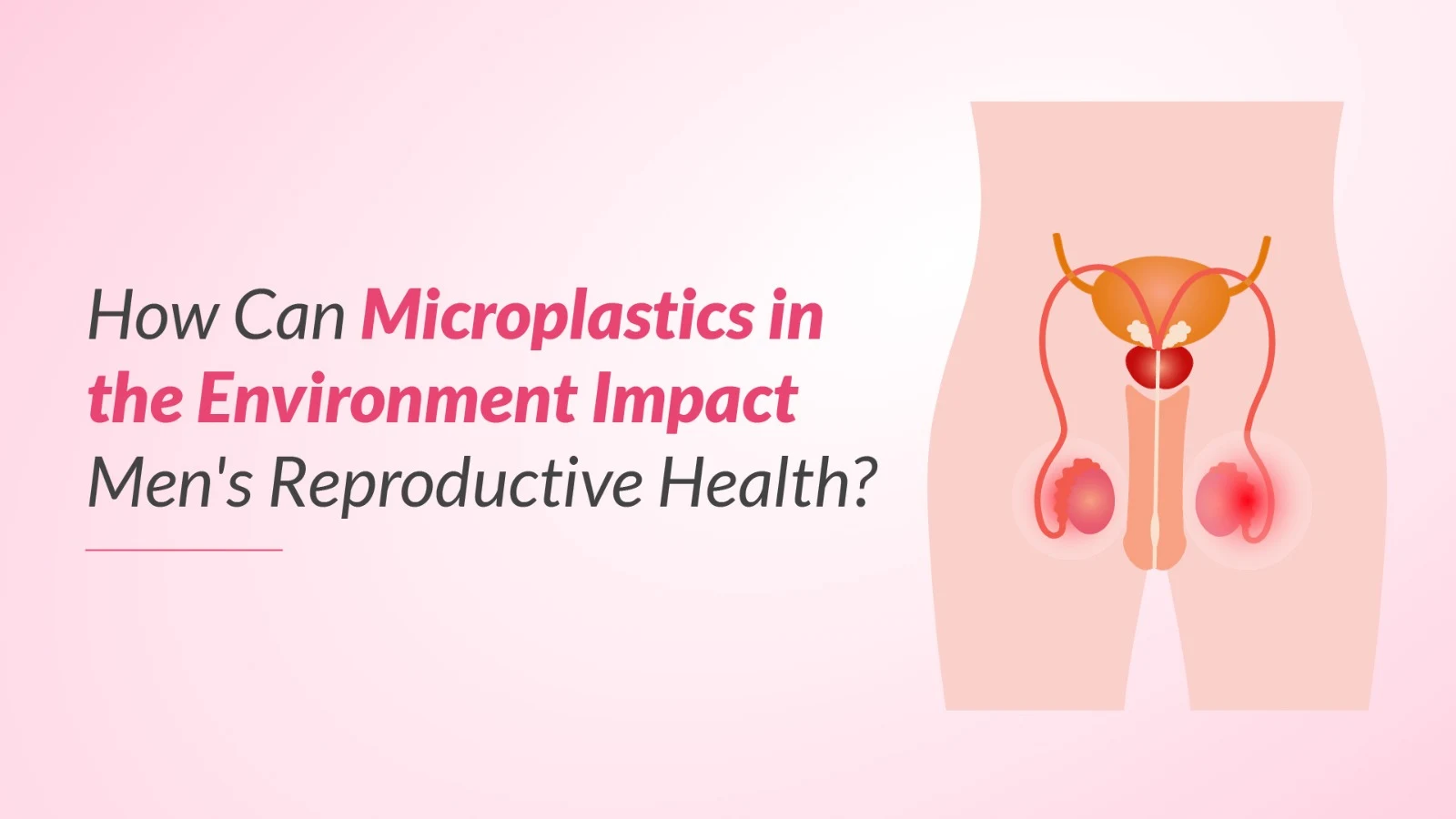Plastic pollution has become a huge environmental concern in the modern era, with microplastics – tiny plastic particles measuring less than five millimetres – being a significant contributor. These minuscule fragments are ubiquitous in our oceans, rivers, soil, and even the air we breathe. While the effects of microplastics on marine life and ecosystems have been well documented, recent research has shed light on their potential to affect human health adversely, particularly men’s reproductive health.
Causes of Infertility in Men
Infertility can stem from various factors, including genetic, environmental, and lifestyle-related causes. In men, infertility can be attributed to factors such as hormonal imbalances, anatomical abnormalities, chronic illnesses, and exposure to certain environmental pollutants. As research continues to unravel the potential risks posed by microplastics, their impact on male reproductive health has become a growing concern.
Suggested Read: Impact of Prolactin Hormone on Fertility in Men and Women
How do Microplastics affect Infertility?
Microplastics can enter the human body through oral route, nasal pathway, and dermal absorption. Once inside the body, these tiny particles can accumulate in multiple organs, including the reproductive system. Several studies have suggested that microplastics can interfere with the functioning of the male reproductive system, potentially contributing to infertility.
Signs of Reproductive Health Issues from Microplastic Exposure
While the full extent of the impact of microplastics on men’s reproductive health is still being investigated, some potential signs and symptoms have been identified. These may include:
- Altered hormone levels
- Decreased sperm count
- Reduced sperm motility (movement)
- Abnormal sperm morphology (shape)
- Testicular inflammation or damage
- Oxidative stress
- Genetic abnormalities
It is important to note that other factors can also cause these signs and symptoms, and a detailed medical evaluation is necessary for an accurate diagnosis.
Find Hope and Solutions for Female Infertility and Male Infertility — Explore Our Comprehensive Services
ICSI Treatment
PICSI Treatment
Fertility Preservation Service
Blastocyst Culture & Transfer Treatment
Impact on Men’s Reproductive Health
Hormonal Disruption
Microplastics have been found to contain various chemical additives and contaminants, some of which are known endocrine disruptors. These substances disrupt the body’s hormonal balance, affecting male reproductive function. Hormones play a crucial role in the development & regulation of the male reproductive system, and any imbalance can lead to adverse effects on fertility.
Reduced Sperm Count
Studies have suggested a link between microplastic exposure and reduced sperm count in men. The exact mechanisms are not fully decoded, but it is believed that microplastics may interfere with the normal process of spermatogenesis (sperm production) or cause direct damage to sperm cells.
Decreased Sperm Motility
Sperm motility (the sperm’s ability to swim effectively) is essential for successful fertilisation. Research has indicated that exposure to microplastics may impair sperm motility, potentially reducing the chances of conception.
Altered Sperm Morphology
The shape and structure of sperm cells, known as sperm morphology, play a crucial role in their ability to fertilise an egg. Studies have shown that microplastic exposure may lead to abnormal sperm morphology, which can contribute to infertility or increase the risk of genetic abnormalities in offspring.
Testicular Damage
Some studies have suggested that microplastics may accumulate in the testes, potentially causing inflammation, oxidative stress, and damage to the testicular tissue. This can impair the testes functioning and disrupt the synthesis & maturation of sperm cells.
Oxidative Stress
Microplastics have been associated with generating reactive oxygen species (ROS). These can lead to the development of oxidative stress in the body. Oxidative stress can damage sperm cells, impair their function, and contribute to male infertility.
Inflammation
Microplastic exposure has been linked to inflammatory responses in various organs, including the reproductive system. Chronic inflammation in the male reproductive tract can disrupt normal function and potentially contribute to infertility.
Chemical Leachates
Many plastics contain numerous additives and contaminants, such as bisphenol A (BPA), phthalates, and heavy metals. These substances can leach from microplastics and accumulate in the body, potentially affecting male reproductive health through various mechanisms, including endocrine disruption, oxidative stress, and genetic damage.
Genetic Damage
Some studies have suggested that microplastic exposure may lead to genetic alterations or damage to sperm cells. This can increase the risk of congenital disabilities or genetic disorders in offspring and potentially contribute to infertility.
Long-Term Health Effects
While the immediate impact of microplastics on male reproductive health is concerning, the long-term effects are still being investigated. Chronic exposure to microplastics may have cumulative effects on fertility and potentially increase the risk of other health issues, such as hormonal imbalances, chronic inflammation, and certain types of cancer.
Suggested Read: How Does Aging Affect Fertility In Men?
What Extent Microplastics Affect Fertility
It is important to note that the impact of microplastics on male fertility is an emerging area of research, and the full extent of the problem still needs to be fully understood. While numerous studies have highlighted potential risks, the severity and prevalence of the issue may vary depending on factors such as:
- Exposure Levels: The effects of microplastic exposure may depend on the concentration & duration of exposure. Higher levels of exposure are likely to have more significant impacts on reproductive health.
- Individual Susceptibility: Some individuals may be more susceptible to the effects of microplastics due to genetic factors, underlying health conditions, or other environmental exposures.
- Interaction with Other Factors: Microplastic exposure may interact with other environmental pollutants, lifestyle factors, or genetic predispositions, potentially exacerbating or mitigating the effects on male fertility.
- Particle Size and Composition: Microplastics’ size, shape, and chemical composition may influence their ability to accumulate in the body and their potential to cause harm.
- Routes of Exposure: The effects of microplastic exposure may vary depending on the primary route of entry into the body (ingestion, inhalation, or dermal absorption).
Further research is necessary to fully understand the extent of the impact of microplastics on male fertility and to develop effective strategies for mitigating these risks.
Suggested Read: 5 Common Diagnosis and Treatment Methods for Male Infertility
Conclusion
The presence of microplastics in the environment & their potential impact on men’s reproductive health is a growing concern. While research is ongoing, several studies have highlighted potential risks, including hormonal disruption, reduced sperm count, decreased sperm motility, altered sperm morphology, testicular damage, oxidative stress, inflammation, and genetic damage.
It is crucial to recognise that microplastic pollution is a complex issue requiring a multifaceted approach. Efforts should focus towards reducing plastic waste, promoting sustainable alternatives, and implementing effective waste management strategies. Additionally, further research is needed to fully understand how microplastics affect male reproductive health and develop potential mitigation strategies.






























